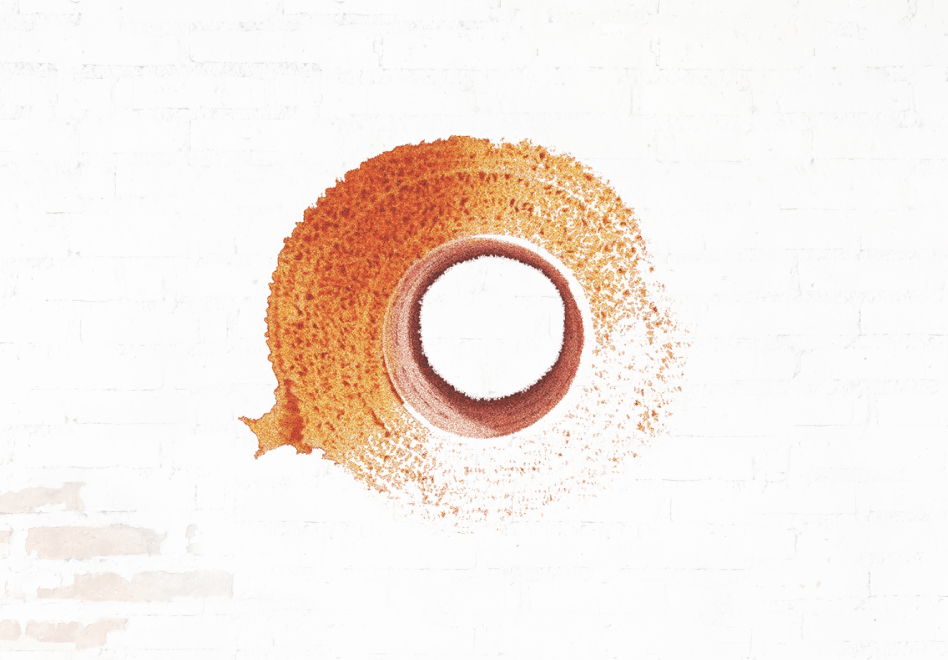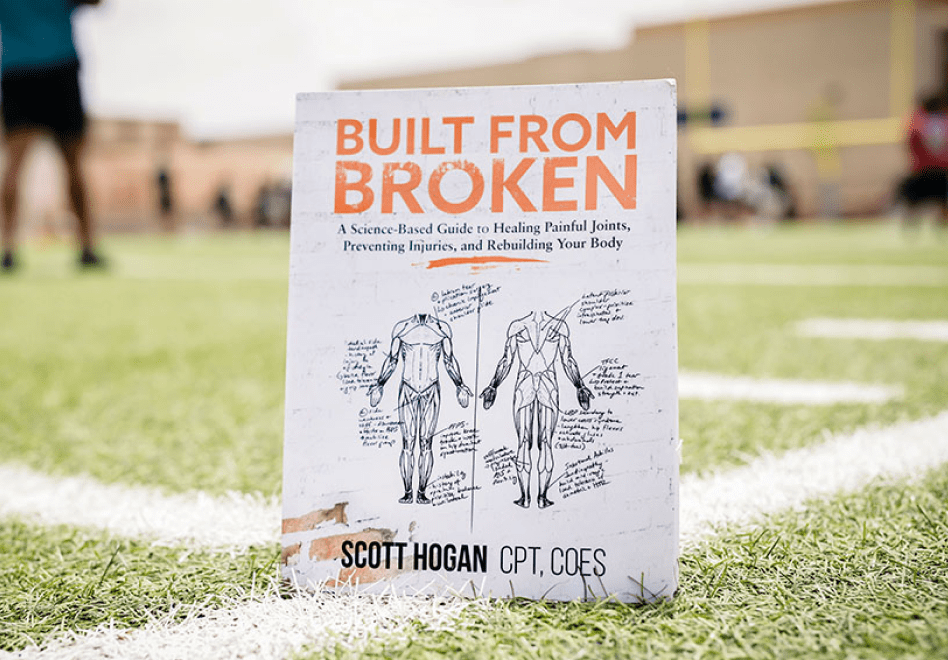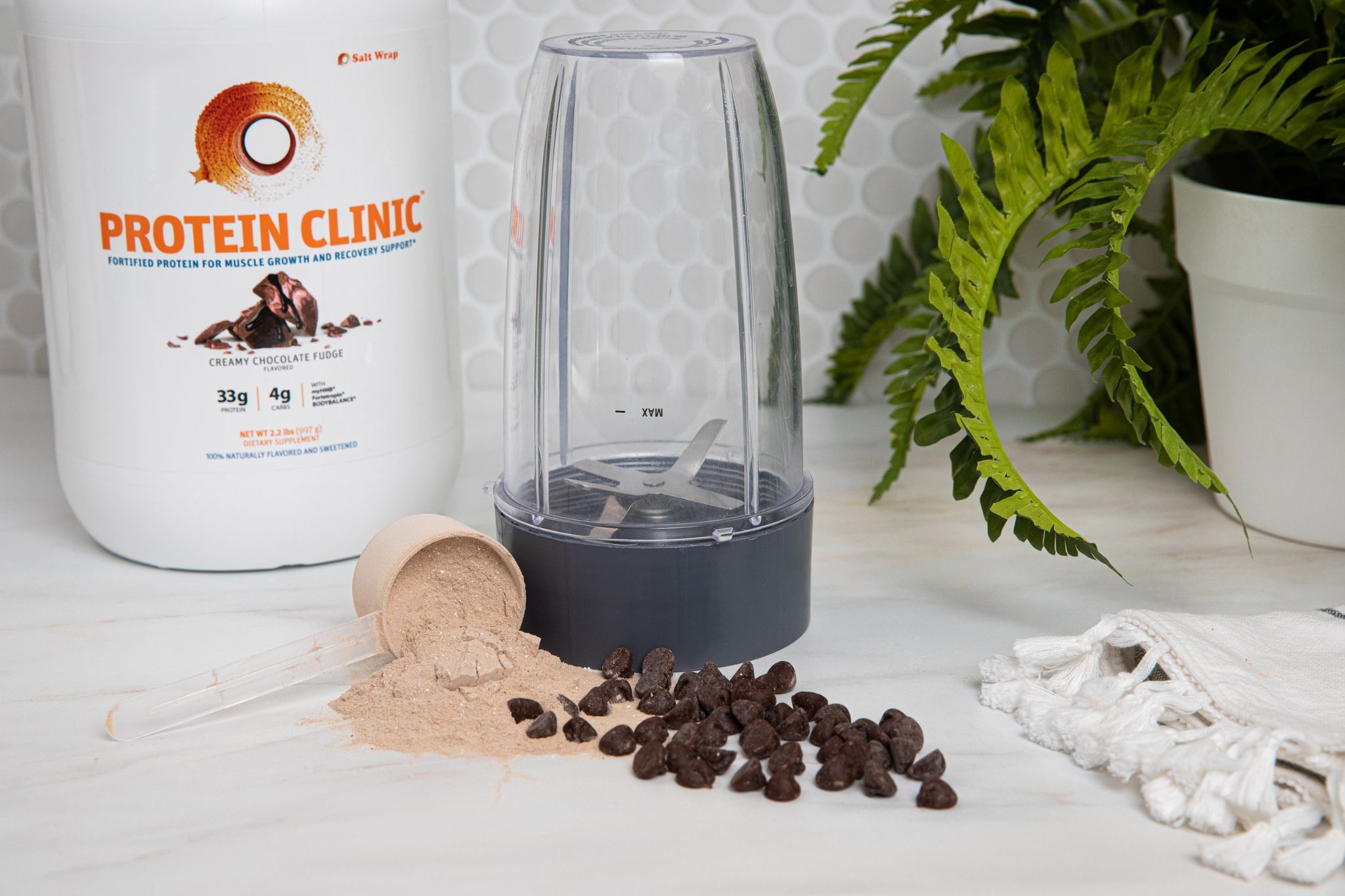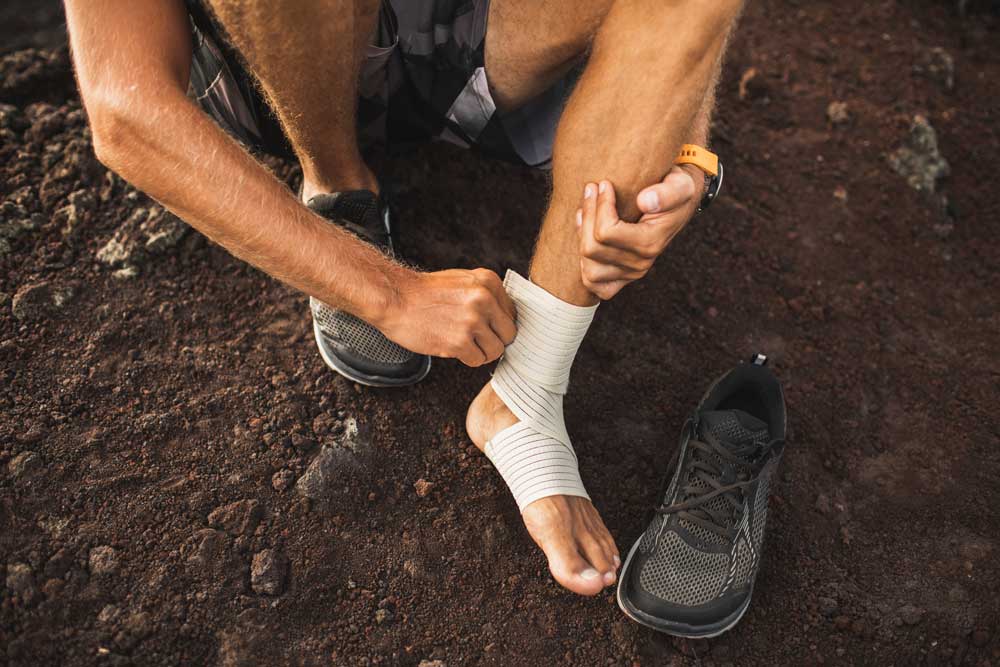
Be built (to last).
The right supplements can help you recover naturally and build a resilient body.
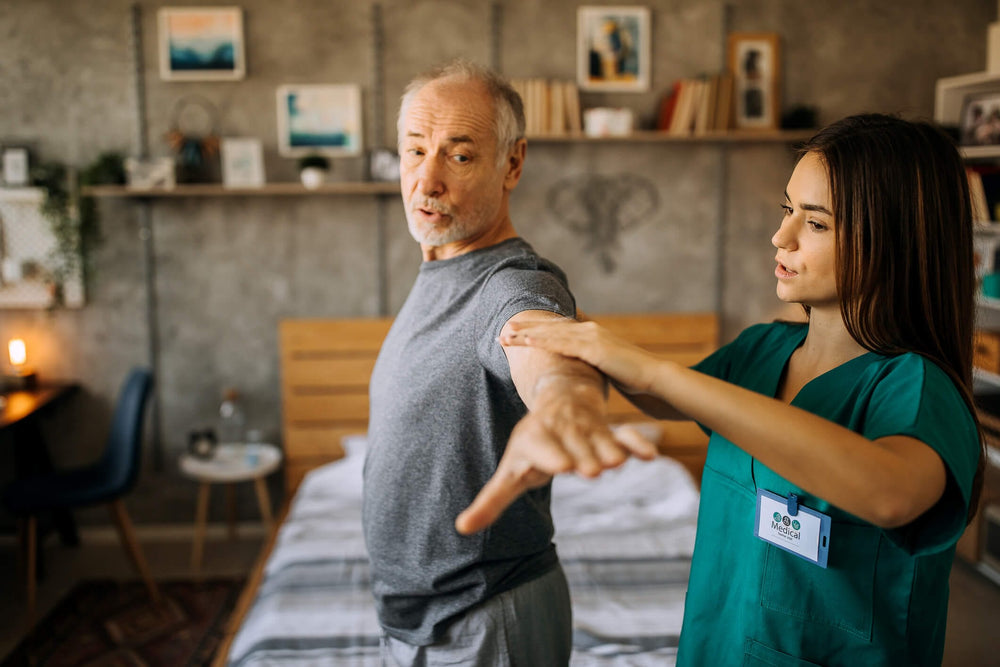
Supplement Quiz
Take this short quiz to discover the perfect supplements for your needs and goals.
About SaltWrap

Built from Broken
Get the best-selling book from SaltWrap founder, Scott Hogan, and start rebuilding today.
How To Boost Muscle Protein Synthesis
By Joe Zagami
Most people think building muscle is about lifting heavy and eating massive amounts of food. And while both have their place, one critical factor determines your muscle growth rate: muscle protein synthesis.
If you want to get serious about building muscle, you need to know how to optimize muscle protein synthesis.
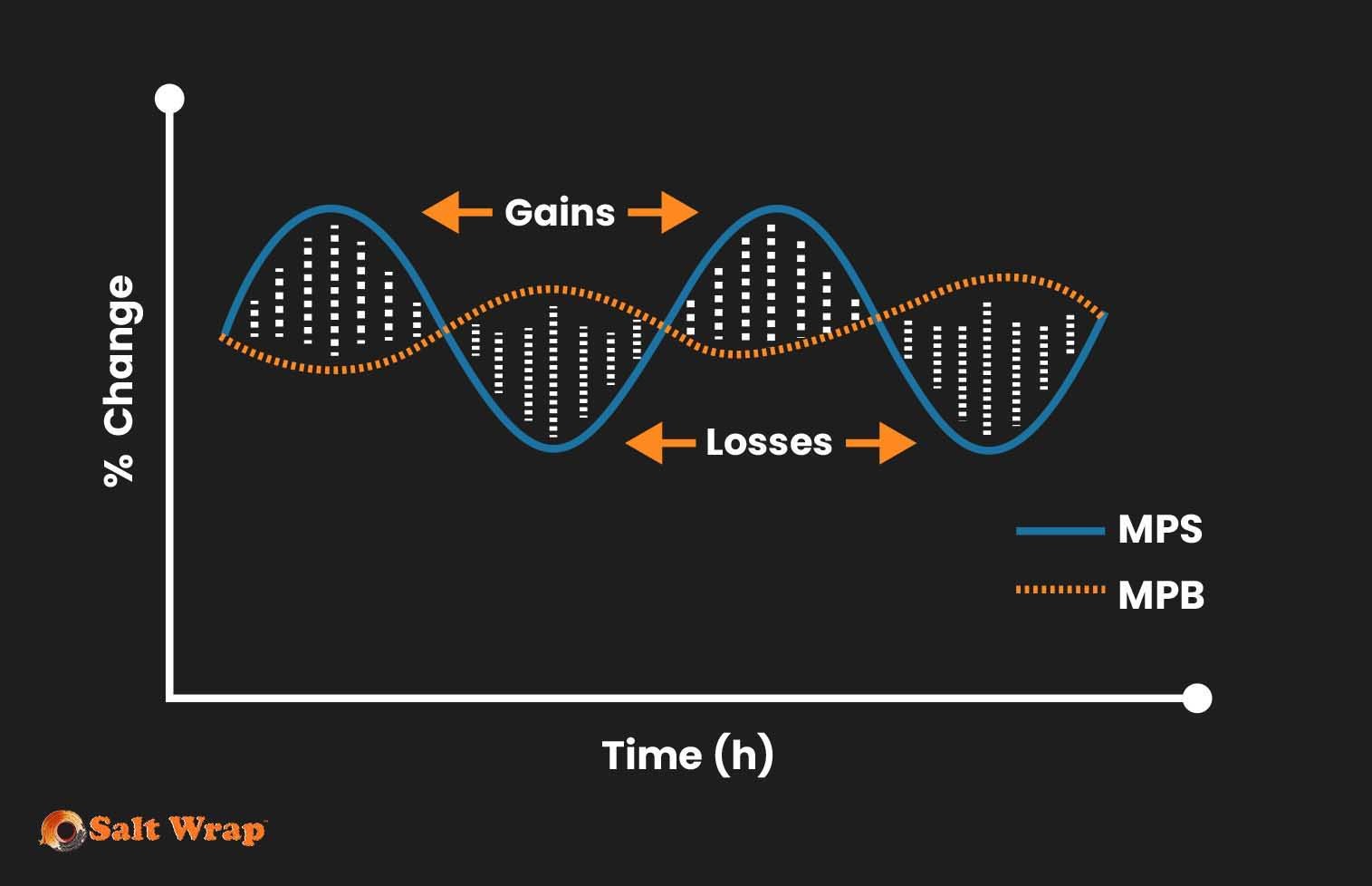
Understanding Muscle
When it comes to building muscle, any good meathead will tell you that it all boils down to protein. The more protein you can choke down at each meal – and the more frequently you can eat – the more jacked you can become.
Believe it or not, they’re onto something. But there’s much more to it than that.
Let’s start with how we think about muscle growth. First, you must understand that our bodies naturally resist putting on muscle. (And it only gets harder as we get older.)
It’s better to think of building muscle as a repair process rather than a building process. Resistance training damages muscles. It also causes muscle protein breakdown (MPB) due to protein loss during exercise.
But this is a good thing.
Because when we consume protein after a workout, it sparks muscle protein synthesis (MPS). If MPS is greater than MPB, then we can sufficiently repair muscle damage and grow bigger and stronger muscles in response.
In short, building muscle is not just about how much protein you can eat in a single meal – or even in a single day. It’s about how efficiently you can stimulate MPS.
How To Stimulate Muscle Protein Synthesis
You could say that if there’s one “trick” to muscle growth, it’s tipping the scales in the direction of MPS over MPB. But that’s easier said than done. To do this, you must master the two pathways to stimulating MPS.
And as you might expect, it starts in the gym.
Exercise
There are no two ways around it: if you want bigger, stronger muscles, then you need to work them hard enough to trigger MPB. This breaks down muscle so that it can rebuild bigger and stronger.
There are many ways to accomplish this based on your fitness goals – strength, size, muscle endurance, looking good at the beach, etc. But research shows that when it comes to stimulating MPS, there are five simple “golden rules” to follow during your workouts:
-
Do more than one set. It seems like a no-brainer, but research confirms that doing three sets of a particular exercise increases MPS significantly more than a single set.1 We recommend 4-5 total sets per exercise. This included at least one warmup set to prime the muscles and about three “working sets” with a challenging weight.
-
Use the right rep range. For stimulating MPS, we recommend 8-12 reps per set. Use strict form. Maxing out to hit a new personal record (PR) has its place. But unless you’re training for a strongman competition, you’re asking for injuries by going all-out for sets of one or two reps. And that brings us to the next point…
-
Fail wisely. Research shows that the MPS response won't be optimal if your sets are not taken close to failure. In fact, it may be small.2 But that doesn’t mean you have to take every set to failure to stimulate MPS. Leaving a rep or two “in the tank” (i.e., training close to failure) for most sets produces similar gains to training to complete failure.3
We generally like the idea of taking your last set to failure – but only where it’s safe to do so. Machine chest press? Go for it. Barbell bench press alone in your garage with nobody to spot you? Please don’t risk it. Leave a couple of reps in the tank instead?
What Is Failure?
For our purposes, muscle failure is when you cannot perform the concentric portion of an exercise (ex: the initial upward lift of a dumbbell bicep curl) unassisted.
“Close to failure” is when the concentric portion is very challenging to complete with proper form but can still be done. (Ex: using a small amount of momentum to swing the dumbbell up from the starting point of a bicep curl on your last rep or two.)
-
Watch the clock. Did you know that longer rest periods between sets (ex: five minutes versus one minute) can increase MPS?4 The idea is that longer rest periods allow for more effort on your next set. That means more weight and/or more reps – and that means more MPS. But unless you’re trying to max out on a very taxing compound movement, like deadlifts or barbell squats, five minutes may be a bit much.
One study found that a three-minute rest period between sets significantly improved muscle mass gains through increased MPS compared with one-minute rest periods.5
Our take? Use common sense. You probably don’t need three minutes of rest between warmup sets. But as you get closer to your last set of an exercise, where you’ll be aiming for failure (or close to it), that three-minute rest might make a big difference in how hard you can push yourself.
-
Train and rest frequently. Studies have shown that resistance training can stimulate MPS for more than 72 hours, but MPS peaks at 24 hours.6 In other words, training a muscle group once a week is suboptimal for MPS.
Instead, find a training split that balances frequency and rest. For instance, the popular push/pull/legs split allows each muscle group to be worked twice per week, but with two days’ rest between workouts – and a full day off for total recovery before the split repeats the following week.
Of course, what you do in the gym is just half of the MPS equation. The rest takes place in your kitchen.
Nutrition
The workout is over. Your muscles are fried. The MPS process is primed to fire on all cylinders. But it needs help in the form of smart nutrition. Just as with exercise, there are simple rules here, too.
Here are the three most important nutritional rules to follow for MPS:
-
Eat enough protein. Forget “eat big to get big.” This isn’t about eating as much protein as you possibly can. It’s about stimulating MPS. Research suggests that a range of 0.8 to 1.2 grams of protein per pound of body weight is enough.7 For a 200-lb man, that would mean eating between 160 and 240 grams of protein per day.
-
Time your protein properly. You only need about 30 grams of protein per meal to maximize MPS. (Though research shows 40 grams of protein immediately post-workout is optimal for MPS.8) The problem is that MPS lasts for about three hours at most. This is where meal timing comes into play.
If you can maximally stimulate MPS every three hours, you can tip the scales in favor of MPS rather than MPB. For instance, if you need 180 grams of protein per day, you could consume about 36 grams of protein every three or so hours. It doesn’t need to be exact, nor does it need to be “all or nothing.” But if your goal is maximizing MPS, aim for at least 30 grams of protein about every three hours.
-
Look to Leucine. You know that all protein is made up of branch-chain amino acids (BCAAs). But you may not know that not all protein is created equal. That’s true for food and supplements alike. So, if you want to optimize MPS, you need to zero in on the most important BCAA of them all: leucine.
Research shows that leucine not only stimulates MPS, it also depletes during hard aerobic exercise. Worse yet, one study found that athletes who didn’t consume adequate protein during a five-week strength training program saw baseline serum leucine levels drop by 20%.9
So, what’s the solution? You don’t need to throw money at expensive BCAA powders. (But you can if you want.) You can get leucine from common foods like eggs, oats, peanuts, cottage cheese, and lentils. If you want to go a bit more exotic, pumpkin and hemp seeds and spirulina can add extra leucine to your diet.
Food isn’t the only way to boost MPS with nutrition. The right supplements can help maximize MPS, too.
Here are three of our favorite supplements for boosting MPS.
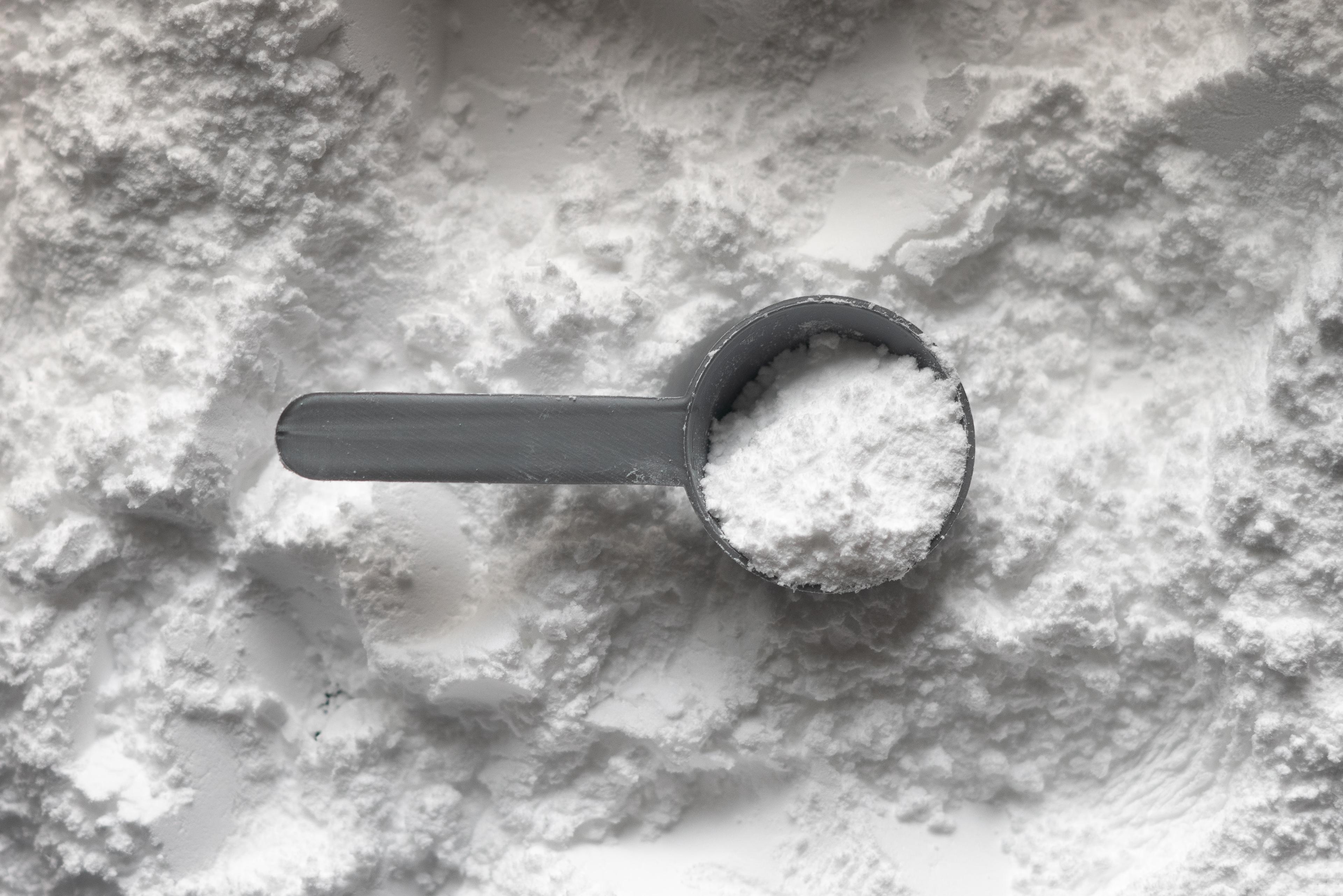
Above: Food isn’t the only way to boost muscle protein synthesis - the right supplements can help, too.
3 Supplements for Boosting Muscle Protein Synthesis
myHMB®. There’s a good chance you’ve heard of β-hydroxy β-methylbutyrate (HMB). Our bodies produce it naturally when we consume leucine. It balances the scales of muscle growth by simultaneously decreasing MPB and boosting MPS. But it’s tough to get enough from diet alone.
About 5% of the leucine we eat converts into HMB. You’d have to eat 60 grams of leucine – about 600 grams of quality protein – to get the optimal 3-gram dose of HMB each day.10
However, myHMB®, a well-studied patented form of HMB, is clinically shown to:
-
Increase muscle mass, improve strength, and reduce fat when combined with resistance training11 12
-
Boost MPS while reducing MPB13
-
Reduce muscle soreness after exercise14
-
Improve recovery from exercise15
-
And even enhance the muscle-building effects of plant-based protein16 17
myHMB® could be the world’s most clinically supported muscle-building ingredient in terms of safety and efficacy. It’s backed by more than 50 studies and over 40 scientific reviews.
Organic pea protein. Yes, really! You were expecting us to mention whey, right? Whey is indeed considered the “gold standard” of protein supplements. But the truth is that it isn’t for everyone. (Some people start to feel gassy and bloated if they even look at a bottle of whey protein.)
Meanwhile, research shows that pea protein yields similar strength and muscle gains to whey when combined with resistance training.18
Plus, pea protein is high in leucine, which makes it superior for MPS compared with other plant proteins like soy, chickpea, and even hemp.
The one knock – if there is one – on pea protein is that it doesn’t contain the amino acid methionine. This means that it’s not technically a complete protein since it only delivers eight of the nine essential amino acids. But there’s an easy fix. Just combine it with rice protein, which has a good amount of methionine.
Together, you get an optimal dose of all nine essential amino acids.
Vitamin D3. Is there anything this vitamin can’t do? You likely know about its ability to support bone and joint health. But it can also boost the recovery benefits of myHMB®. That’s exciting enough by itself. Yet recent research suggests vitamin D3 may have a direct effect on MPS.
That alone is reason enough to ensure you aren’t low on it. But that same study also found that D3 may help regulate energy production, which could greatly impact muscle strength, function, and performance.19
Putting It All Together
Look, putting on muscle is hard. But it’s not impossible. Optimizing MPS allows you to prime your muscles for maximum natural growth.
It starts with what you do in the gym.
Work hard – and smart – to sufficiently break down muscle with the proper exercises and number of sets and reps. Challenge yourself to hit failure (or close to it) where it’s safe. Give yourself enough time between sets to adequately recover based on effort. And use a split that allows for adequate volume and sufficient recovery.
Once the workout is in the books, your hard work continues in the kitchen.
Aim to consume .8 to 1.2 grams of protein per pound of body weight each day. Time your meals so you get about 30 grams of protein – ideally 40 grams right after your workout – every three hours. And prioritize leucine (whether from food, supplements, or both) in your diet to set the stage for optimal MPS.
Of course, supplements can help with that, too.
We outlined three of the best supplements for optimizing MPS: myHMB®, organic pea protein, and vitamin D3.
Any of them could help provide a nice boost in MPS. But when you combine them? It can help take natural MPS optimization to its full potential.
That’s precisely what we did with Protein Clinic™.
Protein Clinic™ is the first all-natural, food-based muscle growth and recovery shake designed to optimize MPS – and two other critical regulators of muscle building.
If you want to set the stage to achieve your full natural muscle-building potential, then Protein Clinic™ is for you.
Click the button below to learn more.
Founder: Scott Hogan

I created SaltWrap to bring together the most practical ideas in therapeutic sports nutrition, corrective exercise, and functional fitness — with the goal of keeping you (and myself) strong, mobile, and built to last.
I've worked as an A.C.E. Certified Personal Trainer, Orthopedic Exercise Specialist, and nutritional supplement formulator.
But more importantly — I've spent most of my life battling injuries, joint pain, and just being plain beat up. So I know what it's like to struggle toward fitness goals.
SaltWrap is here to push you through injuries, setbacks and perceived physical limitations. To a place beyond what you think you're capable of. Sign up here to stay in the loop.
Learn more about my best-selling injury prevention and recovery book, Built from Broken.

